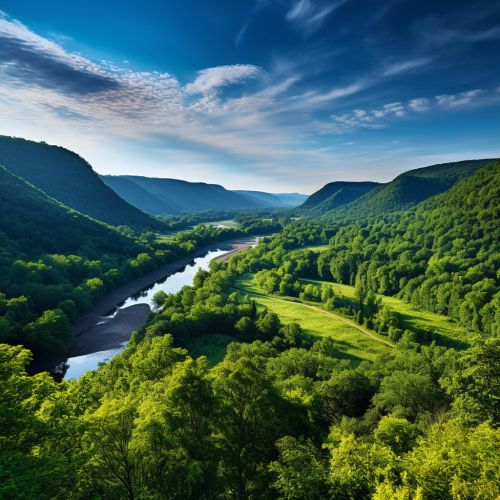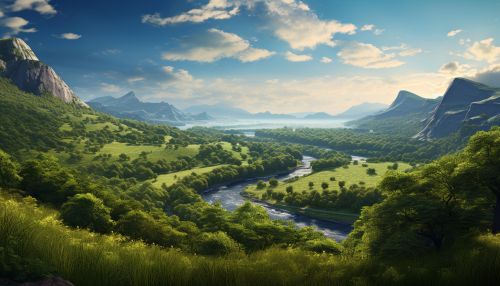Hudson River
Geography
The Hudson River is a 315-mile (507 km) river that flows from north to south primarily through eastern New York in the United States. The river originates in the Adirondack Mountains of Upstate New York, flows through the Hudson Valley, and eventually drains into the Atlantic Ocean at New York Harbor, between New York City and Jersey City. It is named after Henry Hudson, an Englishman sailing for the Dutch East India Company, who explored it in 1609.


History
The Hudson River and its tributaries, notably the Mohawk River, were the main thoroughfares for the territories of the indigenous peoples of the region. The river was used for travel and trade by Native American tribes including the Lenape, Mohican, and Iroquois. European exploration of the Hudson began with Henry Hudson in 1609. The Dutch established the colony of New Netherland along the river, with the capital at New Amsterdam, which was later renamed New York City when the English took control of the colony.
Ecology and Environment
The Hudson River has a diverse ecosystem. The upper river is a freshwater river, home to species such as the American shad, striped bass, and Atlantic sturgeon. The lower river is a tidal estuary, influenced by the ocean tides, and is home to a wide variety of marine life. The river is also an important site for bird migration and is part of the Atlantic Flyway.
Economy
The Hudson River has played a vital role in the economy of New York State and the northeastern United States. It has been used for transportation and trade since the time of the Native Americans and European settlers. Today, it continues to serve as a major transportation route, with numerous ports along its length, including the Port of New York and New Jersey, one of the largest ports in the world.
Cultural Significance
The Hudson River has been an inspiration for artists, writers, and musicians for centuries. The 19th-century art movement known as the Hudson River School was centered on romantic and realistic depictions of the river's landscapes. The river has also been the setting for numerous works of literature and music.
